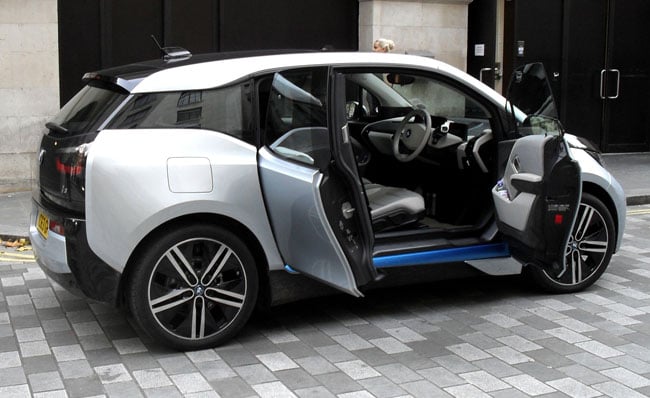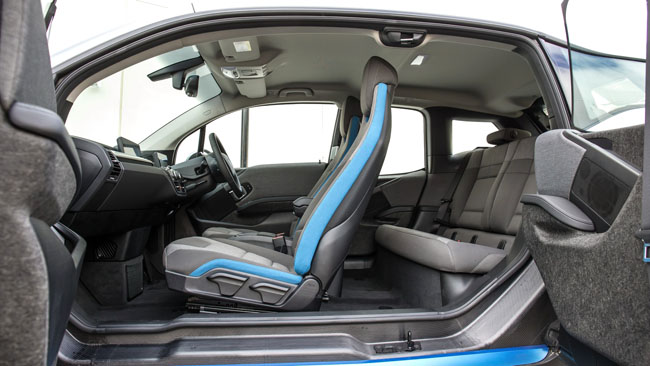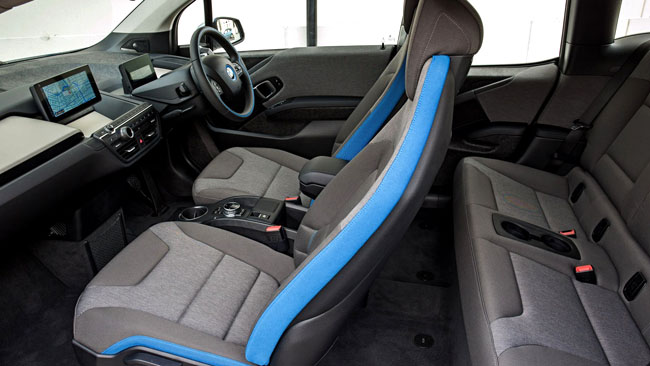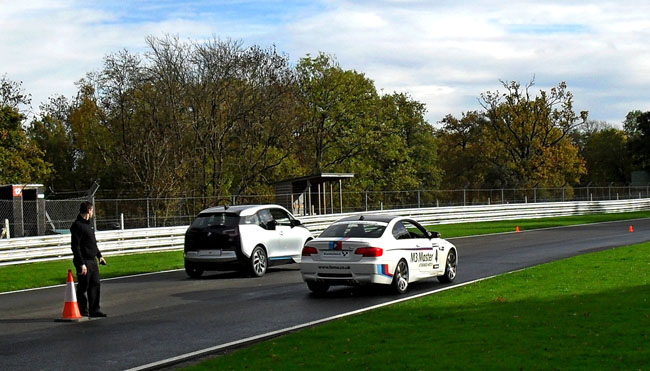This article is more than 1 year old
Ultimate electric driving machine? Yes, it’s the BMW i3 e-car
The smart ‘leccy car from the folks at Bayerische Motoren Werke
Extended range
At the back? You bet. Like the Smart ForTwo, the i3 is rear-engined and rear-wheel drive. The size of the engine and petrol tank should give you a clue that the range extender is just that, not a motor designed to let you drive the length of the country as that capability is in a plugin hybrid. With a full tank of unleaded and a fully charged battery, getting 200 miles down the road shouldn’t, says BMW, be a problem.

No B pillar here
At all times the i3 is electrically driven. The range-extender motor only pumps juice into the battery, and it can only maintain the battery charge level, it can’t increase it, at least not by any significant amount.
Left to its own devices, this REX motor will fire up when the battery gets down to its last 3.5 per cent of charge and will keep you moving until you can plug the i3 into the mains. Once the battery drops below 75 per cent, you can force the REX motor to maintain that level, in effect conserving your current charge for pure electric motoring later in your journey.
Of course, you are free to keep topping up the fuel tank and holding your charge, so making a long trip in the i3 REX isn’t out of the question, but BMW is keen to stress that’s not really what the little two-pot is for.

Coach doors open to a spacious interior
I found the petrol engine to be surprisingly unobtrusive, much less so than the one in the Vauxhall Ampera. If you’re driving along in utter silence you can just hear it, but if you have the stereo on or the window open, you can’t.
The only external difference between the REX and BEV i3s is the petrol filler flap on the front wing. The engine ups the i3’s emissions to 13g/km of CO2 and increases its weight by 150kg. BMW quotes a combined cycle fuel economy figure of 470.8mpg for the REX. Yes, the decimal point is in the right place.
But what really what separates the i3 from other electric cars is the focus on driving dynamics. I took a REX i3 from central London to Brands Hatch where I got to throw it through some bends and have a drag race with an M3 driven by a BMW test driver.

The interior is harshly modern, but it quickly becomes familiar
Thanks to the i3’s featherlight weight and 125kW (170hp), 250Nm electric motor, I beat the M3 from a standing start to 50mph twice on the trot. According to the spec sheet, the i3 BEV can hit 62mph in 7.2 seconds but can reach 37mph in 3.7.
Of course, the M3 driver had to contend with changing gear while all I had to do was push the pedal to the carpet and hang on. But there’s no denying that all the way up to its top speed the i3 is a genuinely rapid little car.
It handles well, too. Despite the tall shape and high, semi-commanding driving position and pretty skinny 155/70 tyres, the i3 went through Dingle Dell Corner and Stirling’s Bend at speed with perfect composure, even on a damp track. And even with heavy-footed hack like me at the wheel.

i3 about to beat m3
Thanks to that low-slung battery pack, getting the i3 to break traction is nigh on impossible, even while threading the car though a cone slalom at speed, a manoeuvre made all the easier by the very tight turning circle and impressive all-round visibility. Speaking of which, exactly where the front end stops requires a bit of guesswork since the bonnet – which conceals a small storage cubby – drops away steeply.
